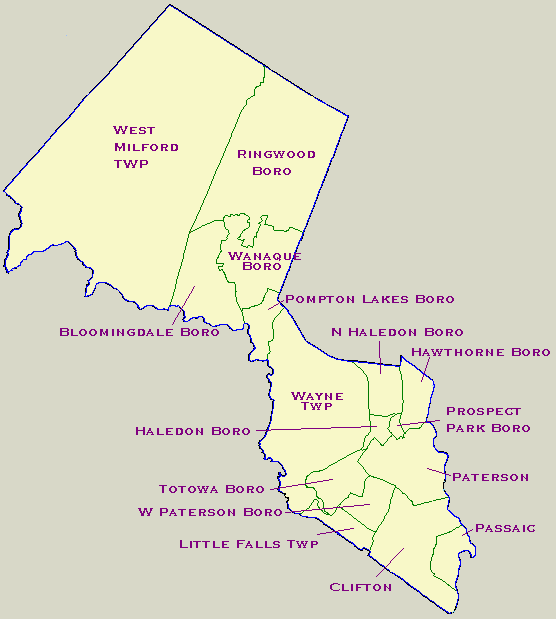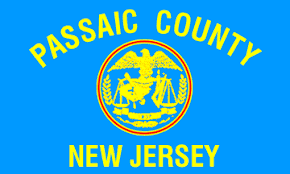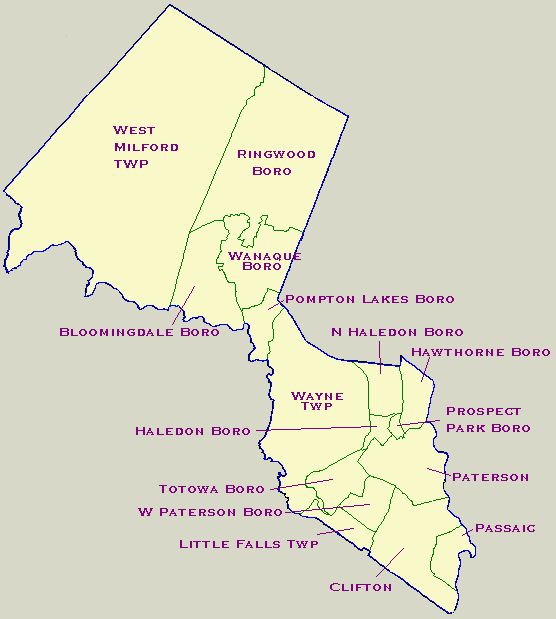
Passaic County, NJ: Silk Roots, Street Rhythms, and the County Where Movements Are Made
Located in northern New Jersey along the edge of the Appalachian Highlands, Passaic County is a place where rivers, railroads, and resistance meet. From the roaring falls of Paterson to the quiet ridges of West Milford, it’s a county shaped by labor strikes, migration, and multicultural community life. It’s where mill workers once organized strikes that changed national labor laws—and where today’s youth are still marching for housing, climate justice, and visibility.
This county has depth. It has voice. And it’s far more than a stop between the suburbs and the city.
Origin and History
Passaic County’s legacy begins in the water—and flows through revolution and resilience.
- Lenape Homeland: Before colonization, the Munsee-speaking Lenape people lived along the Passaic and Pompton Rivers—fishing, farming, and stewarding the land that is now Passaic County.
- Industrial Birthplace: Founded in 1837, the county’s economic center was Paterson, America’s first planned industrial city. Designed by Alexander Hamilton around the Great Falls, Paterson became a national hub for silk, locomotives, and immigrant labor.
- Labor History: In 1913, thousands of silk mill workers—many women and immigrants—led the Paterson Silk Strike, one of the most significant labor uprisings in U.S. history.
- Immigrant Powerhouse: Over time, the county became home to large Italian, Irish, Jewish, Armenian, Dominican, Puerto Rican, Peruvian, Arab, and South Asian communities—each shaping its culture, politics, and rhythms.
Demographics
Passaic County is bold, bilingual, and beautifully complex.
- Population: Approx. 524,000 residents (2020 U.S. Census)
- Cultural Composition: About 45% Latinx (primarily Dominican, Puerto Rican, Peruvian, and Mexican), 28% white, 16% Black/African American, 10% Asian (including Indian, Bangladeshi, and Filipino), and 4% multiracial.
- Languages Spoken: Spanish, Arabic, Bengali, English, Portuguese, Gujarati, and Haitian Creole are widely spoken across households and businesses.
- Immigrant Energy: Over 35% of residents are foreign-born, and immigrant-owned businesses form the backbone of many downtowns and local economies.
Geography and Government
Passaic County includes dense cities, quiet suburbs, and mountainous lake towns—all under one county banner.
- Size: 197 square miles
- County Seat: Paterson
- Municipalities (16 total): Bloomingdale, Clifton, Haledon, Hawthorne, Little Falls, North Haledon, Passaic, Paterson, Pompton Lakes, Prospect Park, Ringwood, Totowa, Wanaque, Wayne, West Milford, and Woodland Park.
- Government: Managed by a Board of County Commissioners. Responsible for public health, elections, county roads, the sheriff’s department, and community colleges.
Where We Thrive
Passaic County thrives in its resistance, art, food, and family-first culture.
- Public Schools: Quality varies widely across towns. Urban districts like Paterson and Passaic are working to close opportunity gaps, while suburbs like Wayne and Clifton offer strong public school systems.
- Community Colleges & Higher Ed: Passaic County Community College (PCCC) offers affordable education, immigrant support services, and adult learning centers.
- Black & Brown Faith Centers: Churches, mosques, and temples—especially in Paterson, Passaic, and Prospect Park—serve as hubs of mutual aid, youth mentorship, and political organizing.
- Creative Culture: From Dominican street poets in Passaic to visual artists in Haledon and open-mic nights in Paterson, the county pulses with creativity and grassroots expression.
Fun Facts and Local Gems
- Paterson Great Falls National Historical Park: A natural and historical landmark—and one of the largest waterfalls in the U.S. by volume.
- American Labor Museum (Botto House): Located in Haledon, this former unionist’s home honors the legacy of the 1913 silk strike and labor history nationwide.
- Garret Mountain Reservation: A beloved green space on the edge of Paterson and Woodland Park—perfect for hiking, picnics, and cultural festivals.
- Passaic’s Downtown Markets: Bustling with Dominican bakeries, Arab-owned grocery stores, and Peruvian street vendors selling tamales and ceviche.
Challenges and Change
Passaic County is rich in people—but still battling against deeply rooted inequality.
- Housing Insecurity: Gentrification in Paterson and Passaic has led to rising rents and limited affordable options—especially for undocumented families and young people.
- School Disparities: Urban schools often face underfunding, outdated buildings, and staffing shortages—despite strong student leadership and parent advocacy.
- Policing & Incarceration: Over-policing of Black and brown youth, immigration enforcement, and conditions in the county jail remain major concerns.
- Environmental Justice: Industrial pollution and flood risks disproportionately affect low-income and immigrant neighborhoods—especially in Paterson, Passaic, and Clifton.
Community Voices
“They call us ‘inner city,’ but they don’t see the inner strength. We’ve got stories, labor history, and family roots going back five generations. We’re not just surviving—we’re leading.”
— Alondra C., educator and community archivist in Passaic
Why Passaic County Matters
Passaic County is where people have always organized—for better wages, better schools, better futures. It’s where migration and memory live in the same apartment. Where murals tell you the truth, and youth don’t ask permission to lead. If New Jersey is going to be just, Passaic must be heard.
HFYC uplifts Passaic County because movement doesn’t start in headlines—it starts on blocks like these.
Call to Action
Live in Passaic County? Know a student leader, street vendor, artist, elder, tenant organizer, or youth coach shaping your city or town?
Let us help tell their story.
Submit a feature, nominate a changemaker, or reflect on what Passaic County means to you—from the mill ruins to the church steps.







